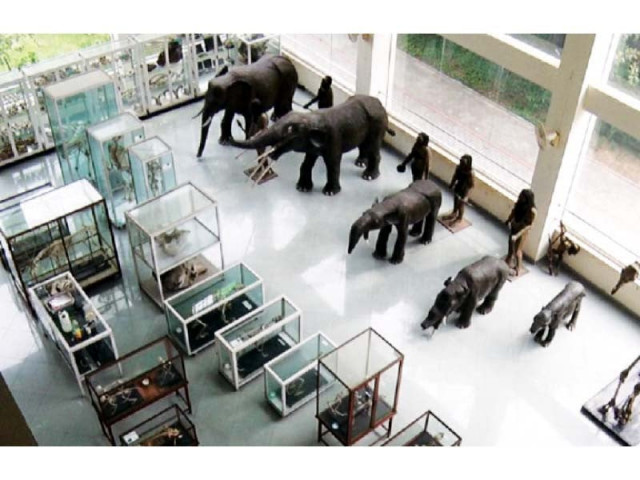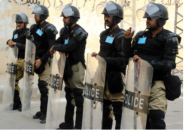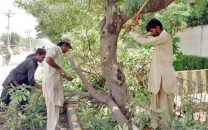Museum’s ornaments weave imperial-era glory
Ancient gemstones, royal women’s jewellery spark memories of Mughal, Sikh, Jain periods

The Lahore Museum houses artefacts which are reportedly hundreds of thousands of years old.
The historical artefacts also include some of the ornaments that were discovered in 10,000-year-old tombs and graves. The museum houses jewellery from MehrgarhCivilization, Indus Valley, Harrappa, Mohenjo-daro and Mughal period.
Tourists who visit the museum, especially women, look at the jewellery made of different metals with profound interest.
Aqsa, a history student at Punjab University (PU), told The Express Tribune that the use of jewellery had been a feature of women for centuries.
“Today, gold and silver jewellery is used but this is jewellery that is centuries old and it belonged to a different time. They are very rare and special. We cannot find old-fashioned jewellery today but their replicas are definitely available.”
Read Museum opened at heritage home in Hyderabad
Another student named Maryam Arshad Tarar said, “These ornaments remind us of our ancestors and ancient civilisation. They look like they have something special in them and their design is unique indeed.”
“Every time you use a copy of these ancient jewels, it feels like we have gone back centuries,” the student asserted.
Lahore Museum Collection In-charge Ehtesham Aziz said that apart from Mehrgarh, Balochistan, Sindh Valley, Mohenjo-daro and Harappa periods, the museum also housed jewellery of various metals that belonged to the eras of Buddhism, Jainism, Mughal period, Sikh and British periods.
“These ornaments were made of clay, oysters, stones, silver, gold but in all of them there were special jewels from the Indus Valley civilisation.”
The museum in-charge further said that during the Indus Valley civilisation, the belief in life after death was upheld. “Therefore, the people of this civilisation used to bury the deceased along with other things belonging to the departed including ornaments and utensils.”
“During excavations at various places, we had found ornaments with human skeletons that reflect the customs and traditions of the time,” he added.
PU Department of Archaeology Chairperson Dr Mohammad Hameed said that if we talk about South Asia and especially our region, we find evidence of the use of jewellery from the 10,000-year-old Mehrgarh civilisation.
“They also reflect the social status of the wearer, their gender and the culture of the time. It also reflects the gender and culture of the specific empire’s people. There is also evidence that men used jewellery in those days. Look at some of the statues of Mahatma Buddha; jewellery is found on their whole body.”
The statues date back to when he was a prince, the archaeology department chairperson added. “The more men and women wore heavy ornaments, the higher their status in the society.”
Dr Hameed further that these ornaments also help us to understand the culture, way of life and the people’s habitation of that time.
“These ornaments serve as a mirror for us to see into the centuries-old civilisation. Replicas of this centuries-old jewellery can be easily purchased at souvenir shops outside the Lahore Museum. In Harappa and Mohenjo-daro, many local artisans make replicas of jewellery that sells at high price.”
Published in The Express Tribune, September 10th, 2021.



















COMMENTS
Comments are moderated and generally will be posted if they are on-topic and not abusive.
For more information, please see our Comments FAQ